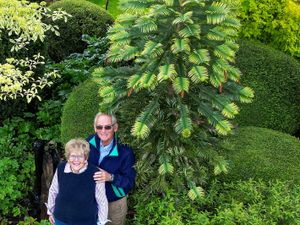Otterly awesome: Black Country volunteers track down elusive otters - with VIDEO
Volunteers have been out across the Midlands searching for otters as part of a wildlife survey.

The Wildlife Trust for Birmingham and the Black Country has been looking for the animals to try to gauge how many otters there are across the region.
Otter numbers have risen nationally and the Trust is looking for see if that rise has been reflected locally – particularly around the River Stour.
Volunteers have been out in November, December, January and this month as they looked to get a picture of otter activity in the region.
Biodiversity and Planning Officer Hannah Lewis has discovered signs of otter where a housing development had deculverted a 500m section of the river, bringing it back above ground where it had previously been diverted below.
It is the first time signs of otter were spotted in this location.





